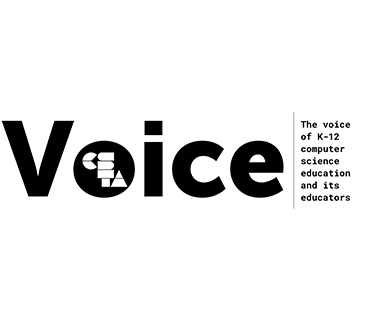With the school year well underway, I can’t help but reflect on where we are today in computer science (CS) education. Numerous initiatives to expand access to CS were initiated over the last decade.
Full Story
With the school year well underway, I can’t help but reflect on where we are today in computer science (CS) education. Numerous initiatives to expand access to CS were initiated over the last decade. Many successful stories of school systems integrating computing into their curriculum have been shared. Standards have been created or updated and there has been an increase in policies acknowledging the importance of CS.
Through my prior work on the Advanced Placement Computer Science Principles (AP CSP) project funded by the National Science Foundation, I was fortunate to meet high school teachers across the nation, passionate and dedicated to bringing the highest quality CS experiences to their students. The teachers who participated in the pilot were amazing. They came to meetings to learn, to contribute, and to form a community that would help sustain success for a course which has rooted in its framework the goal of broadening participation in computing.
I am forever grateful for having met these teachers as I learned so much about perseverance from them. And notably, they helped fuel my commitment to contest injustices that still exist in American education. These are the questions that continue to drive my work in a new role as Director of Educational Innovation and Leadership at the Constellations Center for Equity in Computing at Georgia Tech.
- What effect did the AP pilot have on how and where the course is currently being offered across the nation?
- Why didn’t the pilot include more teachers of color (Black and Hispanic/Latino teachers) and teachers representing schools in most need of assistance with prioritizing CS education?
- Why weren’t teachers from inner city or urban schools like in San Antonio, Oakland, Dallas, Detroit, Chicago, Baltimore, or Atlanta in the pilot? Or teachers from rural New Mexico, Montana, North and South Dakota?
- Are there enough teachers to teach CS in these places?
Regardless, there is more work to do to achieve a fair representation of teachers and students in schools in low-income communities.
I raise these questions publicly now because this time of year is an ideal time to reflect on our efforts to achieve equity in computing education. The mission of the Constellations Center is to democratize computing. As such, I want to be transparent in promoting access to computing, not only in places where structures already exist to serve students well but also in school systems where we haven’t been as keen as we ought to be.
In the background of Georgia Tech’s campus lies the Atlanta Public Schools (APS), a system unique to its surrounding seven counties that make up the Atlanta metropolitan area. APS represents the segregated population of students that live in South Atlanta, where 80% of the students are Black, 7% are Hispanic/Latino, and 12% are White. The average household annual income in these neighborhoods is approximately $29,000. Of the ten public non-charter high schools in APS, seven of them do not report any White students enrolled. In 2016, every surrounding school system in the Atlanta metropolitan area that had two or more public non-charter high schools had two or more public non-charter high schools offering at least one section of the AP CS A or the AP CSP course, or both. APS did not. There was only one public noncharter high school in APS that offered an AP CSP course with a teacher in the classroom.
It shouldn’t matter where students go to school, except that it does. It shouldn’t matter where teachers teach, but it does. Of course, all teachers are challenged with providing the finest educational experiences possible for their students, but the truth is this challenge is exacerbated for teachers in schools in low-income communities.
I don’t have complete answers to my questions just yet—it’s a work in progress. But if you’re reading this article now, it’s likely you’re keeping up with the latest efforts on CS education or you may simply want to know more about what is happening in this space. Whatever the case may be, the point is that in improving efforts to expand access to computing we must find better ways to reach teachers (and students) in schools like those in APS across the nation. We must acknowledge that they warrant more commitment from this community. We can’t keep going to the successful schools. We must be in systems where there is no justice in computing education and make it right.

